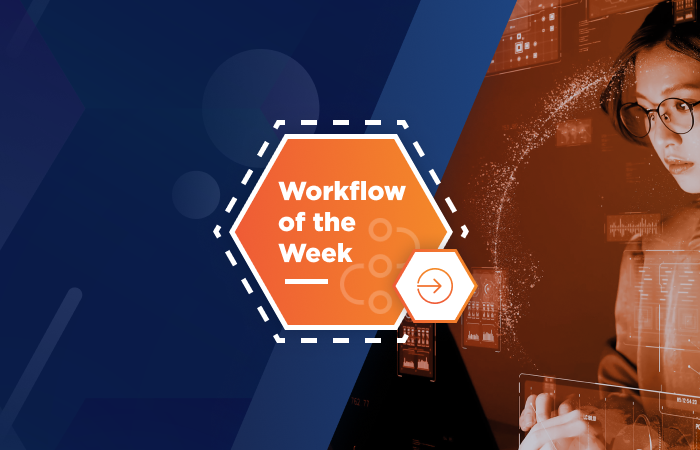Workflow of the Week: Accelerating the Vendor Onboarding Process
How to evaluate the evolving risk factors in your vendor relationships and streamline your vetting process for faster time-to-value.
Today, many companies find that it can take up to six months to fully onboard new vendors, delaying improvements and denying any hope of a “quick win.” There are very common driving forces behind a particularly long or complicated implementation process, including:
- Lack of standardized processes
- No visibility or oversight into the full onboarding process
- Lack of transparency regarding vendor status
- Confusing task ownership and complex approval hierarchies
- Manual data entry and validation
- Missing information from the vendor that causes rounds of back-and-forth
Workflow automation is both one of the best ways to fight against inefficiencies in vendor onboarding, as well as an ideal way to leverage data — first gathering it in the form of audit trails and then using it to measure and continuously improve your onboarding process. But first thing’s first — besides establishing a better relationship with your vendors and opening up the door for a new quick win, why should you consider automating the vendor onboarding process?
Why Automate Vendor Onboarding?
A well-kept workflow automation secret (particularly in the legal realm) is the opportunity to streamline risk management — especially for more external-facing processes like vendor relationships.
With workflow automation, vendor onboarding can become completely transparent to stakeholders and responsible parties. In a single dashboard — or via email — users can quickly identify what steps need to be taken and who must take them. When bottlenecks appear or additional questions surface, escalations can occur automatically depending on how the workflow has been structured.
For example, some vendors may be riskier than others: these vendors need to go through a serious approval process, while other vendors may be so risk-free that they sail through with automatic approvals, straight to signature. Determining what makes a vendor risky can vary from company to company, but some general characteristics to consider include:
- Their size – smaller companies may have a higher risk of not being able to achieve their deliverables
- Their location – are they operating out of a limited region or area under geological stress?
- Their resources — what materials and services are being supplied and rendered (and do either depend on sensitive, proprietary data systems)?
- Their status – Is the company currently under any sort of governmental sanctions or pending lawsuits?
Depending on your workflow, you can automate risk assessment into the back end so that the requester can identify key pieces of information and then the workflow can automatically triage the request to the correct person.
Leveraging Workflow in the Vendor Onboarding Process — and Beyond
There’s a reason vendor onboarding is one of the first processes organizations look at when deciding what to automate..
Without workflow automation, vendor onboarding often gets lost in a sea of emails, and the amount of time it takes to find the details in a months-long approval process that cuts across legal, procurement, and more can be so great that the audit is effectively lost. With workflow automation, however, your team gains access to two key benefits: audibility and visibility. Every step of every onboarding process is logged and filed – and can be used again as needed. For example, if a company ends its contract with a vendor, but later decides to renew its relationship, everything from that initial contract can be easily summoned and examined — and depending on the history, the vendor can fly through the process or hit extra obstacles.
After data is collected through the vendor onboarding process, stakeholders finally have the kind of information at their fingertips that empowers them to elevate the process even further: at a high level, stakeholders can determine which steps cause the greatest delays, and work to remove obstacles. Chances are, the workflow will show how much time is being saved with automation, giving your team the credit it deserves and showing how automation can empower employees to improve their own processes in ways that affect and help their intra-departmental colleagues.
Without workflow automation, vendor onboarding can be a challenge: often unstandardized, relying on email chains that get forgotten about during the process itself and then become difficult to find after the fact. But with automation, each step of the process is streamlined and subject to data analysis, so that the process is not elevated and automated, but also ready to always be improved.

Accelerate your enterprise.
Transform your processes with best-in-class workflow automation.



